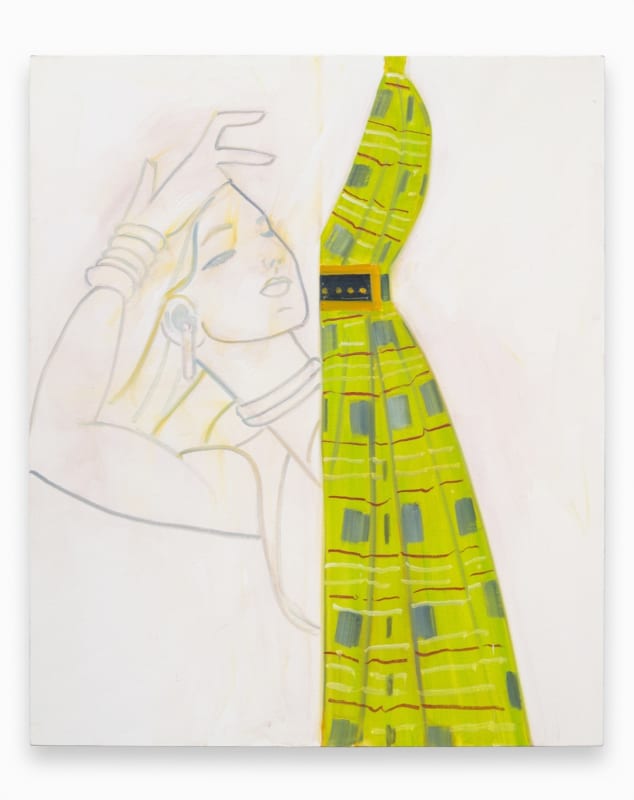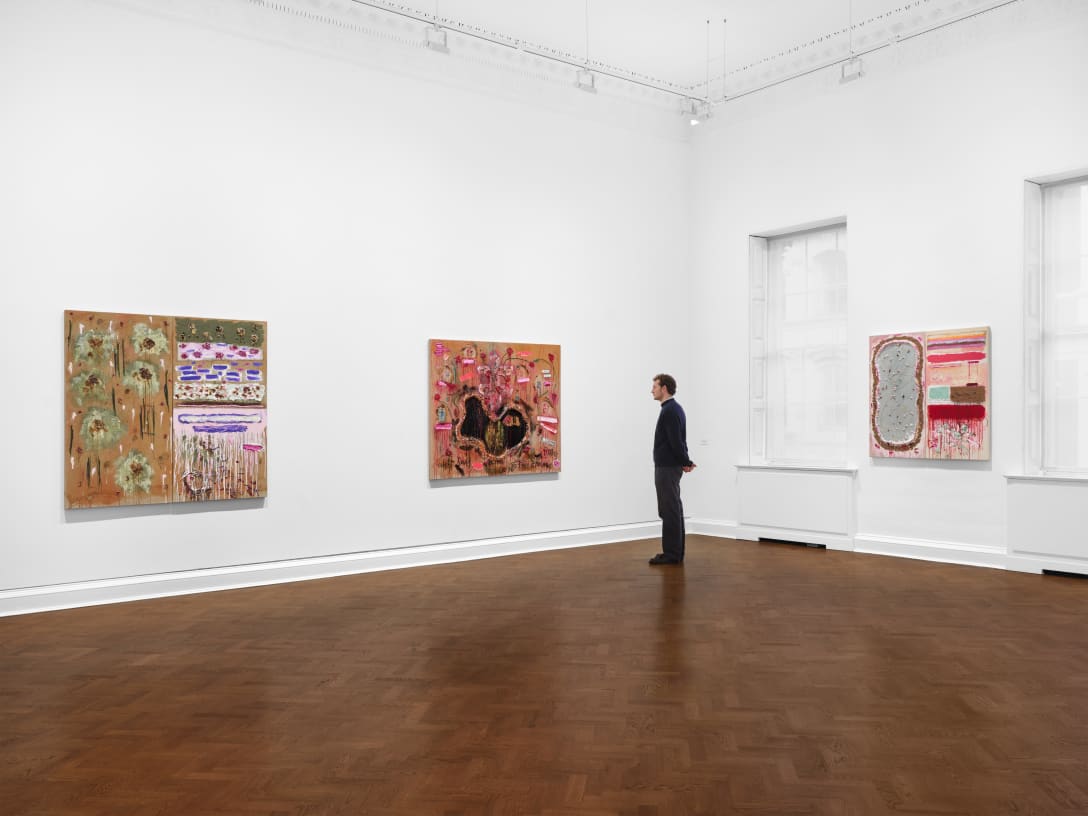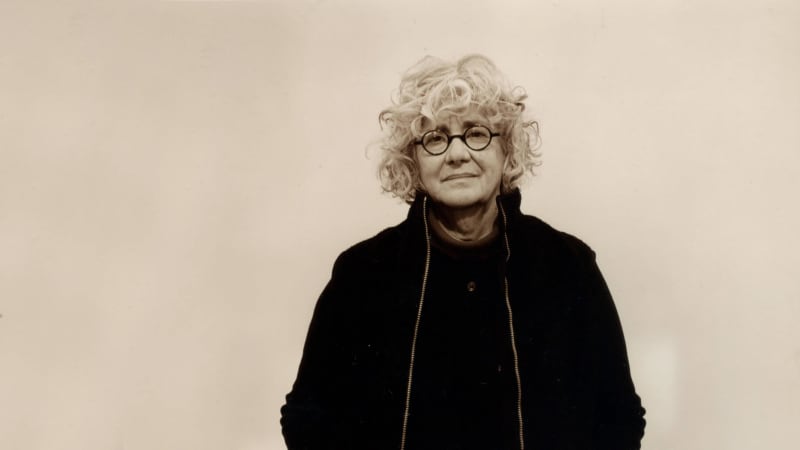Alex Katz's sense of fashion A visit to Claire, Grass and Water
The Giorgio Cini Foundation in Venice presents the latest works of the great American painter, including a tribute to the stylist Claire McCardell. A visit to Claire, Grass & Water.
By Vito de Biasi
He has always defined himself as a "painter of the immediate present" and the statement seems truer than ever in his latest exhibition, Claire, Grass & Water, scheduled until September 29 in the Carnelutti room of the Giorgio Cini Foundation in Venice, on the island of San Giorgio Maggiore. The here and now of the absolute present, a paradoxical objective to be achieved with slow and reflective work like that of painting, is Alex Katz's interest, but also the effect achieved by his latest productions, dedicated as the title suggests to ocean water, to the grass of the landscapes and to Claire, the designer Claire McCardell, a fundamental but not sufficiently recognized figure in American fashion.
The paintings in the exhibition, curated by the director of the Institute of Art History of the Cini Foundation Luca Massimo Barbero, are positioned in three large rooms divided by the three large series, but contrary to how they appear in the title of the exhibition. You enter and first encounter the paintings dedicated to water, a night vision of the ocean, a large dark background crossed by flashes of light and life, then you move on to the vast paintings dedicated to grass to end with fashion . The effect, we were saying, is however of great immediacy, perhaps because they are paintings full of life: "Katz has built large surfaces almost the result of instinct, the more you look at them the more they become an environment, blinding light, colour", comments Barbero. It is true in an almost obvious way for the Grass and Water series, deliberately large paintings so that the landscape is enveloping, and it is true in a more subtle way for the Claire series , dedicated to the designer and her creations. Here the idea of immediacy is also conceptual, and is linked precisely to the nature of fashion: "it is ephemeral", stated the painter himself, "any symbol of what is truly new in fashion immediately becomes mortal".
Perhaps this is what struck him about McCardell's work: not so much the popularity of his well-studied fashion, but the idea of the fleeting moment that fashion inspires, in its use and above all in its image. "Katz manages to restore the temporality of fashion", continues Barbero, "he manages to make the body a ghost and the dress more emblematic of the body itself". The body and clothes are broken up with a montage technique already known to the painter, which recalls the visual strategies of cubism but also cinematic montage. In the paintings, which are also large in size, McCardell's models are reinvented, while remaining faithful to the lines and cuts, to the very concepts that made his fashion revolutionary. What counts, as Barbero suggests, is not the body of the dress but its image, its extreme seductiveness. "It is also a way of re-elaborating and restoring the great editorial capacity of American culture to build an image", explains the curator. In fact, the paintings "broken" into two or three phases, which juxtapose figures and clothes as if scrolling through a cinematographic frame, also recall the graphic care of fashion magazines, imitating at the same time a hypothetical rapid browsing of a publication. A dress, a color, one pattern after another, without isolating or sacralizing anything, a pure quick passage between images, a sense of immediacy of the here and now but also a sense of the rapid passage of time, that mortality evoked by Katz himself.
Barbero's installation manages to restore this rhythm, this flow between water, grass, clothes, which is able to hold together Katz's figurativism, developed in America in an era in which Pollock's abstract expressionism was triumphing, but also his "impressionist" landings of recent years. The paintings on display are all created between 2021 and 2022, but manage to escape any categorization. "Katz is 96 years old today, almost 97, he paints every day, and he has gained a freedom that allows him to produce works that do not have to follow any trend", continues Barbero. "In the past he represented otherness both with respect to abstractionism and Pop Art. He was a portraitist of the customs of his country, of the intellectual and cultural life of the United States".
It is not the first time that fashion is the protagonist of his paintings: already in The Black Dress (1960), Pas de Deux (1983) and Eleuthera (1984) he had captured the protagonism of clothes, making their fleeting presence in culture and on the bodies of his subjects, but the recent homage to McCardell seems to be a more in-depth reflection on the theme. The designer was the first in America to mass-produce affordable clothing but with a studio behind it, a "signature" care for mass production that goes by the name of ready to wear. During the Second World War, contacts with Europe were suspended, the United States could no longer draw inspiration from French fashion for their creations. McCardell herself, the first great traveler to Paris, had to reinvent more dynamic styles, such as sportswear, to reflect the lives of American women, their desires but also their practical needs. Thus the Popover dress and the Monastic dress were born, simple cuts adaptable to any situation, from household chores to cocktail parties. A flexible and pragmatic fashion - very different from French ready-to-wear - which would have constituted the true declaration of independence of American style from the Franco-centric European one.
Katz paid homage to McCardell for this very reason, because the designer had designed an image of a very successful woman in the fifties of her education. As he told Barbero in a conversation for the exhibition catalogue: "The origin of the Claire McCardell series sprung from my subconscious. I was getting out of the tub and a sign said to me: «Claire McCardell». She was with me from everyone those years". The strength of that fashion, so popular, so rooted, is in its generic nature, in its ability to adapt to anyone: "In other words, it's like Levi's", concludes Katz, "you can wear Levi's with a t-shirt or with a jacket from two thousand dollars, it makes no difference. Levi's are completely generic. Calvin Klein underwear is generic, and wearing it makes you feel socially acceptable people's fantasies. There's not much in the way of design, but there's a lot in the way of reasoning."















































































































































































